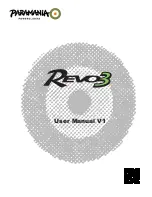
T
RAINING
M
ANUAL
–
L
ANCAIR
IV/IVP
Lancair IV/ IVP Flight and Aeronautical
Decision Making
The standard of care of a General Aviation (GA) Pilot with an Instrument
Rating certificated in the United States is outlined in many government and
industry documents ranging from Federal regulations found in, but not limited
to,14 CFR 61 and 91 series and a multitude of advisory materials published
by the federal government (Federal Aviation Administration--FAA) and
industry. The advisory material expands on and explains the regulatory
information. The core subject aeronautical knowledge areas are found at 14
CFR 61.125, 14 CFR 61.65, the Commercial Pilot Practical Test Standards
and Instrument Rating Practical Test Standards. The Commercial Pilot
Practical Test Standards (FAA-S- 8081-12B, (appendix A-2)) and the
Instrument Rating Practical Test Standards (FAA-S-8081-4 (appendix A-2))
contain a listing of all of the advisory material that expound on the core
subject areas. Commercial Pilot and Instrument Pilot applicants must learn
and be familiar with these core subject aeronautical areas in order to pass the
Commercial Pilot and Instrument Rating check rides and be issued an FAA
Commercial Pilot certificate with an Instrument Rating. The FAA also
publishes a variety of handbooks including the Pilot’s Handbook of
Aeronautical Knowledge, Instrument Flying Handbook, Instrument
Procedures Handbook, Airplane Flying Handbook, among other publications,
in order to convey important aeronautical information to prospective and
current pilots. Pilots are taught much of this information by flight instructors
and are required to demonstrate their knowledge of the various aeronautical
subjects on written as well as oral and practical flight tests given by
instructors and examiners. These subject areas include aviation weather,
aircraft maintenance and airworthiness, aeronautical decision making, aero
medical issues, instrument flying, instrument approach procedures among a
few. In addition to subject knowledge areas, Pilots aspiring to become
Commercial Pilots with Instrument Ratings are trained to flight proficiency on
a variety of flight and flight related tasks and maneuvers, including flight by
reference to instruments, instrument approaches, single engine instrument
approaches, missed approaches, holding, etc. The Commercial Pilot Practical
Test Standard, by which Commercial Pilot applicants are judged on the
respective checkride, emphasizes good judgment and prudent safe operation
of the aircraft. After a person passes a Commercial Pilot and Instrument
Rating checkride and receives a Commercial Pilot certificate and Instrument
Rating from the FAA, that person is allowed to carry passengers for hire and
is expected to always operate in a safe and prudent manner at a higher
standard than that for a Private Pilot. Commercial Pilots are further instructed
and refreshed on this aeronautical information during their required flight
review training every two years at a minimum. Commercial Pilots should
‐
4
–
©
Copyright
2007
LOBO
May
not
be
copied
without
permission.






































